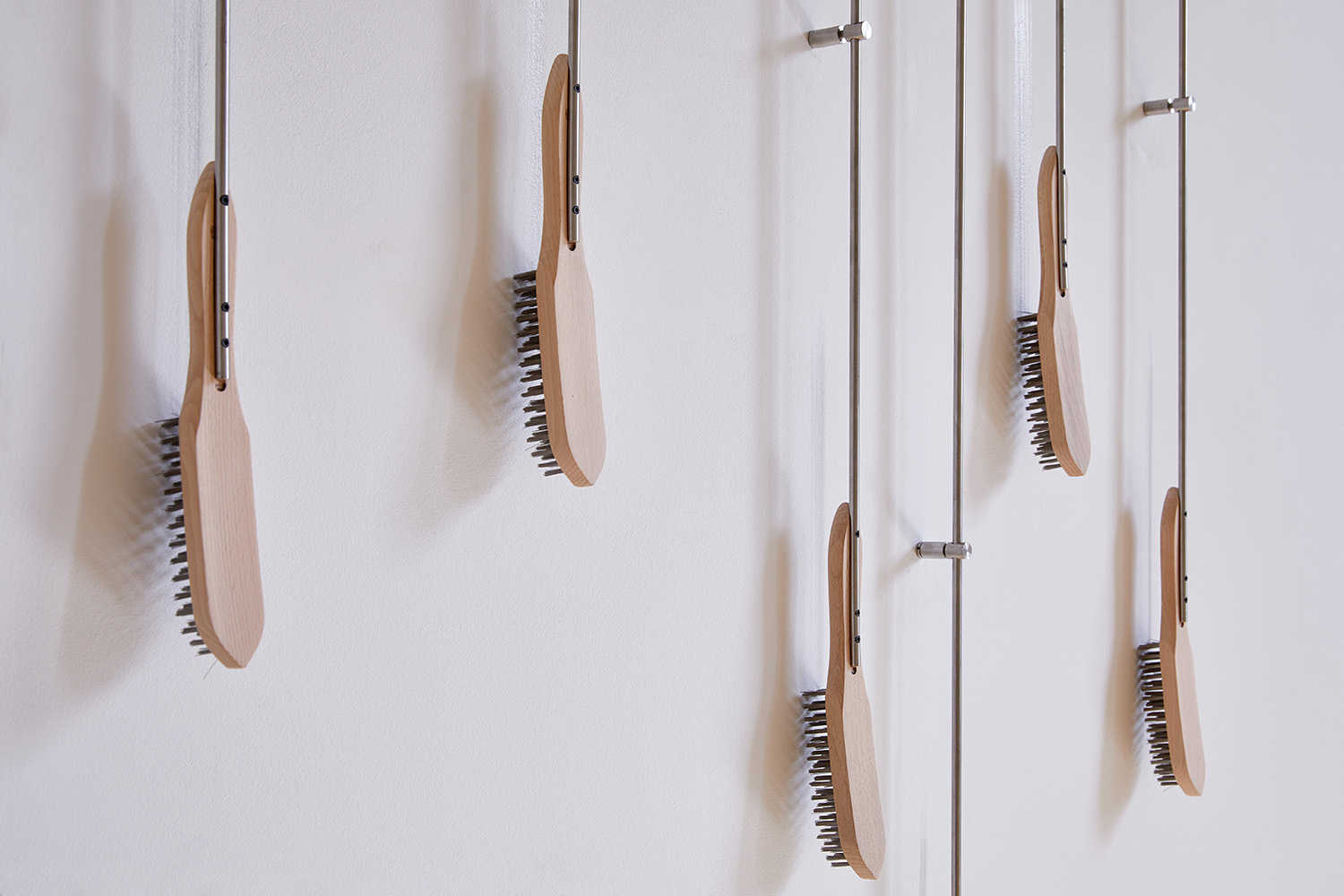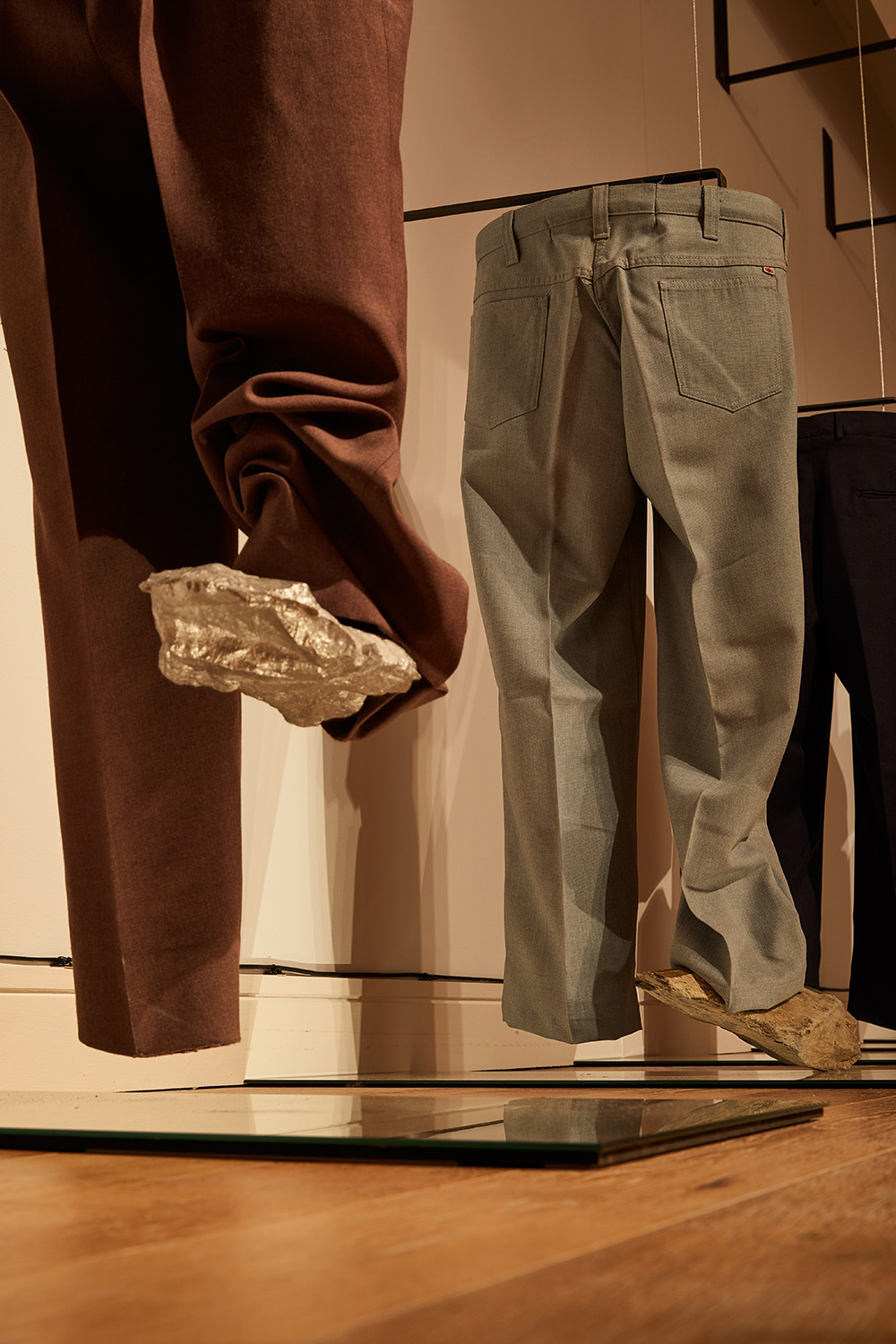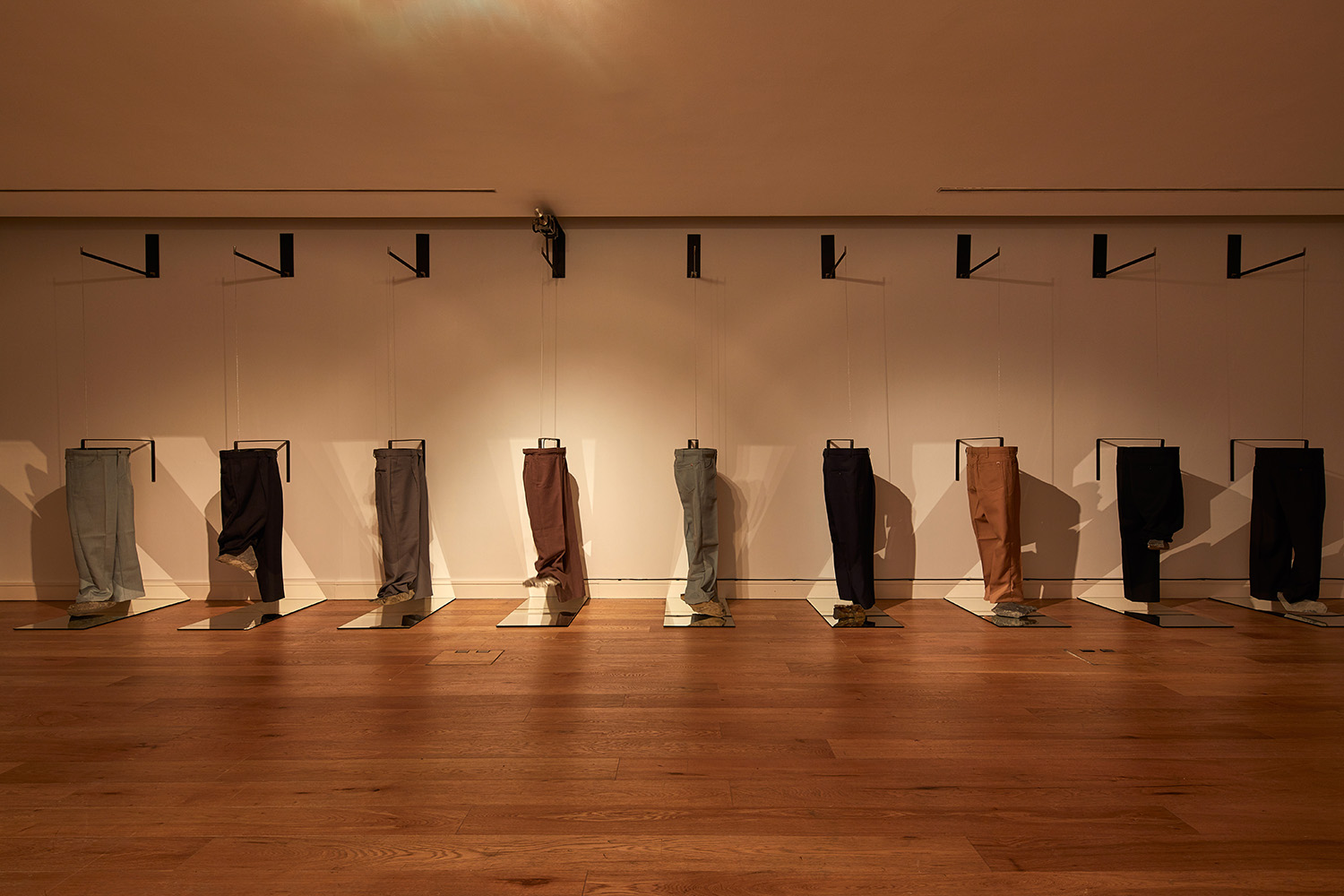Pascal Hachem’s “The Show Has a Long Title That I Don’t Recall Anymore”
By Ned Carter Miles

PASCAL HACHEM, Left Under, 2017, wooden brushes, metal structures, step motor and electrical board. Photograph by Andy Stagg. Courtesy The Mosaic Rooms, London.
The surface of a thing, by definition, is always the part of it that we see. It is the outermost layer that defines our idea of an object in both sight and memory; when we record or represent things remembered, we also often do so on a surface—paper, a canvas, a wall. In Pascal Hachem’s first solo exhibition in the United Kingdom, “The Show Has a Long Title That I Don’t Recall Anymore,” the Lebanese artist uses a number of new works to progressively alter superficies in unforeseeable ways, questioning in turn the capacity of impressions to remain accurate over time.
The three larger works in the exhibition, each of which occupied the majority of the wall or floor on which it was mounted, all involve surfaces being formed, damaged or changed. In Left Under (2017), several wire brushes are part of a mechanism driven by an electric motor, such that they constantly move up and down to scrape the gallery’s wall, progressively exposing and removing layers of paint from previous exhibitions and events, unevenly and unpredictably altering the wall’s surface so as to partially recall past states through glimpses of time gone by.

PASCAL HACHEM, detail of Left Under, 2017, wooden brushes, metal structures, step motor and electrical board. Photograph by Andy Stagg. Courtesy The Mosaic Rooms, London.

PASCAL HACHEM, Back to Square One, 2017, irons, flour, metal structure, step motor and electrical board. Photograph by Andy Stagg. Courtesy The Mosaic Rooms, London.
Notable in Left Under are the use of readymade, handheld implements and the lack of any attempt to conceal the mechanisms that control them, the combination of which suggests the absence of human involvement as the work strides forward in its function, as opposed to negating the maker’s hand altogether. This gave the exhibition’s several curious apparatuses the air of remnants, making references to quotidian human actions and states from the past that were now eerily played out in the repetition of motions, losing something of their essence with each iteration like faulty clockwork toys running to the ends of their springs. Again using domestic objects as components, Back to Square One (2017) is a motor-powered rack-and-pinion system with two household irons attached to either end of a linear gear. Each iron moves slowly back and forth through a mound of white flour—a staple food and symbol of community—working a flat but easily corruptible surface into the powder. Surrounded by thousand of chaotically arranged grains encroaching on either side, and subject to the slightest disruption by any number of external phenomena, this repetitive process of smoothing over a surface—on which some record of activity might be imprinted—edges toward futility, even self-defeat. As in Left Under, the wholeness and stability of the surface are constantly undermined.

PASCAL HACHEM, detail of Back to Square One, 2017, irons, flour, metal structure, step motor and electrical board. Photograph by Andy Stagg. Courtesy The Mosaic Rooms, London.
The repetition at the core of these kinetic works does not serve to stabilize the surfaces that they process, but rather alters them by injecting doubt on the reliability of our readings of them, as well as the ways in which we might remember and interpret the past. The right leg of each pair of trousers suspended above a mirror in The Stone in My Pocket (2017) has a rock where the foot might be. As another motor-driven mechanism lifts the leg to knee-height before letting it thump back down, the accumulated impacts fragment the reflective surface beneath, aleatorically reconfiguring it while corrupting and erasing the image it previously carried. Again, the ability of a surface, like a memory, to reliably bear impressions over time is cast in doubt.

PASCAL HACHEM, detail of The Stone in My Pocket, 2017, trousers, stones, metal cast of stone, mirrors, metal cables, metal structures, step motor and electrical board. Photograph by Andy Stagg. Courtesy The Mosaic Rooms, London.

PASCAL HACHEM, The Stone in My Pocket, 2017, trousers, stones, metal cast of stone, mirrors, metal cables, metal structures, step motor and electrical board. Photograph by Andy Stagg. Courtesy The Mosaic Rooms, London.

PASCAL HACHEM, Tears, 2017, collected concrete masonry unit blocks and tiles from demolished houses and eyeglasses. Photograph by Andy Stagg. Courtesy The Mosaic Rooms, London.
The most poignant and complex of the installations on show was Tears (2017). A series of plinths hold eyeglasses, each pair with one lens sandwiched between or compressed beneath clusters of concrete blocks and tiles, which were retrieved from demolished houses. This work was one of several non-kinetic pieces in the show, though Hachem’s use of materials here succeeds in creating a sense of human absence remembered—more so than in his other exhibited installations. Nonetheless, this is only one part of a complex nexus of meaning. In an evocative, almost violent symbiosis, the glasses are at once held in place and subject to damage by the small masses of rubble, and their surfaces simultaneously carry these marks and the function of elucidating others, suggesting that the act of seeing can also be subject to corruption. In critiquing the capacity of a given surface to reliably maintain an image, Hachem’s work does not tell us to ignore our memories, but—as with anything seen through mirrors, lenses, scratched walls or unstable surfaces—reminds us that they can be warped. Underlying it all, when considered in the context of the series of upheavals that have affected Beirut and Lebanon in the past few decades, changing physical, social and political landscapes alike, the surfaces here and how they retain images may reflect more than initially meets the eye.
Ned Carter Miles is the London desk editor of ArtAsiaPacific.
Pascal Hachem’s “The Show Has a Long Title That I Don’t Recall Anymore” is on view at The Mosaic Rooms, London, until December 2, 2017.






